At a glance
Discover my complete guide on how to cleanse your face properly: which techniques to use, which products to choose, the difference between removing your makeup and cleansing your skin and the secret of double-cleanse finally revealed!
Facial cleansing isn’t always done properly, yet it’s probably the most important step in a skincare routine. Today let’s take a closer look at the best way possible to cleanse your skin, and all there is to know about it!
A good cleanser can really make a big difference in a skincare routine (the opposite is also true, an unsuitable cleanser can totally ruin the skin’s balance).
I’ve heard these kind of sentences a lot in my career:
“But my cleanser only stays on my skin for a few seconds and then I rinse it off, so how could it matter? »
You would think it’s better to invest in a product that stays on the skin rather than one that will end up in the sink. But a sloppy cleansing, or a cleansing product that is too harsh or ill-adapted can do more damage to your skin than you think!
In the long run, you may end up with sensitive skin, a damaged skin barrier or pores that “suffocate” under the impurities you left on your skin!
This often means that you have to invest in a lot of products to compensate for this imbalance when a good, rigorous but gentle cleansing process would probably have been the solution all along!
In this complete guide, I suggest we take a good look at facial cleansing: makeup removal, cleansing, the best products, how to choose them, the best techniques to use them… I’ll tell you everything you need to know!
Quick tip about this article:
This guide is quite long (but hopefully full of interesting information 😉 ), so feel free to jump directly to the part of the article that interests you with the menu at the top of the page. If you click on one of the titles in the “Jump To” menu, it takes you directly to it (it also works on the mobile version and the menu is in the header of the page).
 SkincareHow I build my skincare routine
Building a skincare routine tailor-made for your skin, your needs, your desires, and your budget… Not an easy task. In this article, I explain in detail how I do it!
Read more
SkincareHow I build my skincare routine
Building a skincare routine tailor-made for your skin, your needs, your desires, and your budget… Not an easy task. In this article, I explain in detail how I do it!
Read more
1. Makeup removal and cleansing, what’s the difference?
There can be a lot of confusion in this area, especially because brand marketing isn’t always very clear!
Personally, I’m a fan of the double cleansing method, which consists of removing makeup from my skin first and then cleansing it. It’s a two-step process and it also involves two different products.
Let’s take a closer look at these two steps:
fat dissolves fat…
The makeup removal process:
As its name suggests, it’s basically when you remove your makeup!
To do this, you need to use products capable of dissolving pigments (which are often fatty particles). And since fat dissolves fat, the most effective makeup remover products are most often those with a greasy texture (cleansing balms, oils or bi-phase liquids). This may sound counterproductive but it works.
For me, it’s something essential that I do every night without fail, even if I’m not wearing makeup! This is the first step in my skincare routine.
During the day, I wear sunscreen, which by definition is quite difficult to remove (since you want it to protect your skin for a long time) and I’m also exposed to pollution particles, which also tend to get “glued” to the skin. A simple cleansing product used with water is usually not enough to remove them.
So makeup or not, I always start my skincare routine with a good makeup removal!
Cleansing the skin:
The skin produces sebum and sweat during the day, and it also renews itself constantly, causing an accumulation of dead skin on its surface.
Excess sweat can sometimes cause irritation, and too much sebum can promote the development of bacteria, a phenomenon increased by the presence of too much dead skin on the skin’s surface.
In short, cleansing the skin removes:
– excess sebum and sweat,
– the dirt and dust of the day,
– but also some of the dead skin accumulated on the surface of the skin.
Most of these impurities are easily cleaned off with a water-based product, no need to dissolve them in a greasy base as we saw earlier with makeup removal!
In general, it’s recommended to wash your face twice a day but, especially if you have sensitive skin, once a day may be enough (rather in the evening, however, because it’s definitely when you need it the most). It’s up to you, or as they say, you do you!
An effective skin cleansing process happens on wet skin (without any makeup on, so it has to be removed beforehand), and it’s also essential to rinse off the cleansing product properly.
What about double cleansing?
If I summarize, makeup removal is there to remove the stronger particles that cling to the skin’s surface (which are often greasier particles), while the cleansing process will clean the skin thoroughly (and not just on the surface).
That’s why I think the two steps are important and complement each other if you want perfectly clean skin.
That’s exactly what double-cleansing is! A complete process that effectively removes all impurities that can clog pores and irritate the skin.
2. Why a good (or bad) cleansing process can change everything:
Mainly because a good cleansing process respects the natural protection of the skin while a bad one can damage it and cause an imbalance!
Let’s see the details!
The skin’s natural protection:
On your skin, you naturally find some “fat particles” that come from sebum. These are essential for the good health of the skin: they create its protective barrier and have the power to retain hydration. These are somewhat like natural lubricants if you will. If these “fat particles” are removed, the skin can become dry and feels tight.
There are also “aqueous particles” (= basically, water), known as the protective acid mantle. It contains:
– sweat (composed of lactic acid and amino acids),
– some acidic particles coming from the sebum,
– other acids called the NMF (Natural Moisturizing Factors), which is roughly composed of debris coming from the skin itself.
So, as its name implies, this protective acid mantle has an acidic pH (this is important for the following).
Consequently, the skin is covered with a mixture of water and fat, called the hydrolipidic film. This film naturally renews itself during the day thanks to the secretions of the sebaceous glands (= the sebum) and sudoriparous (= the sweat produced naturally throughout the day).
The hydrolipidic film helps to keep your skin supple and also acts as a protective barrier against unwanted organisms (= bacteria and fungi).
The hydrolipidic film naturally has a slightly acidic pH (between 4.5 and 6 depending on your skin type). This acidic pH constitutes an ideal environment for the skin and guarantees a healthy skin.
So, it’s important to take the pH of your skin into consideration when you choose your cleansing product and also to prefer a soft product, which won’t completely remove this hydrolipidic film, essential to the good health of your skin.
And all these “rules” apply to all skin types! Even if you have an oily skin, you definitely don’t want to strip it. Especially since your skin will usually “take revenge” by overproducing more sebum to compensate for the aggression. Better to avoid it, then.
The consequences of improper cleansing:
Several examples:
– First scenario: a cleanser that is too harsh, which strips your skin.
Examples: any soaps (Marseille soap, Aleppo soap, liquid soaps, shower gel), micellar waters with alcohol…
If you feel, after cleansing your skin with your usual cleansing product, that your skin feels tight, that it’s squeaky clean, in short, that it’s completely “degreased”, well, it’s because it is! And as you read earlier, it’s not necessarily good news for your skin.
When you “lay your skin bare”, it sensibilizes it and the hydrolipidic film, which is supposed to naturally protect the skin, it alters it and can no longer properly perform its barrier function.
Indeed, when you strip your skin with surfactants (=cleansing ingredients) that are too aggressive and remove its natural protective lipids, it becomes permeable: irritants such as dust and pollutants will penetrate more easily and weaken its natural defense.
As a result, you risk a more sensitive skin (with redness, and can feel uncomfortable), which becomes dehydrated, ages faster, and which can also tend to overproduce sebum and break out (for acne prone skins, stripping your skin is really the worst thing you can do!).
– Second example: a cleanser that is too rich.
Examples: a cleansing balm that is too greasy and difficult to rinse, a milk or cream cleansers that is too rich and leaves a greasy residue on the skin…
Even if it’s generally a bad idea to remove completely the lipids of your skin, it’s still important to clean it thoroughly to get rid of the impurities!
A cleansing product that is too greasy and difficult to rinse may leave greasy deposits on the skin and it will be difficult for the skin to remove them by itself.
Consequences: clogged pores, blackheads or even whiteheads and a dull appearance.
– Finally, last case: a cleanser that is badly or not rinsed.
The most common example is not rinsing micellar water.
Many cleansing products claim that it’s not necessary to rinse them. Indeed, it’s interesting in many ways: for a sensitive skin that can’t stand contact with water, but also as a practical aspect (you can use them anywhere).
However, leaving cleansing ingredients on the skin (= the surfactants) can also cause irritation to the skin in the short-term. If you use micellar water occasionally without rinsing it, it doesn’t really matter but if it’s something you do every day, the skin will surely be sensitized.
It’s better to always rinse your cleansing product, even with these which claim “without rinsing”. To rinse them, no need to do it with a lot of water, just using a wet cloth on the face is enough or even better, a spritz of thermal water wiped with a tissue.
So, if I summarize, the consequences of an inadequate cleansing can be:
– a stripped skin that can lead to dehydration, or even dry skin,
– a sensitized and unbalanced skin, which can even overproduce sebum and lead to a break out in some cases,
– a skin which is not clean enough, with pores that clog and a dull appearance.
3. Focus on the different cleansing products:
Makeup removers:
There are several types of make-up remover products. The most common are:
- makeup remover wipes,
- micellar waters (used with cotton pads),
- bi-phase liquids (also used with a cotton pad) with an aqueous phase and an oily phase (usually for the eyes, but there are some for the face),
- water-soluble cleansing oils (water-soluble = which “break” in the presence of water and transform into a milky texture that can be rinsed off more easily),
- water-soluble cleansing balms,
- water-soluble cleansing milks and creams.
I’m not a fan of makeup remover wipes that I find too harsh for the skin and not very effective (in addition to being quite wasteful). When camping, if there is no other way, why not, but used every night, I wouldn’t recommend them!
Two-phase liquids are usually quite effective but I find the use of cotton pads restrictive (and again quite wasteful).
Micellar waters, same thing and in addition, I don’t think they effectively remove makeup and/or UV filters, since they don’t have a greasy phase. For me, they’re not enough and may leave impurities on the skin that can be irritating for your skin in the long term. If you add to that the rubbing of the cotton pad… I definitely don’t like them!
As you can see, my favorites are definitely cleansing oils and balms. IMO, they’re effective products that are in addition very pleasant to use!
Nothing like a good massage of a few minutes to relax in the evening and remove all the impurities of the day! And besides, you won’t need cotton pads with this type of products. They’re great!
I used cleansing milks and creams a lot when I was young (lol) and even if I find them effective (my technique was the same as with oils and balms, I didn’t use cotton with them), I now prefer oils or balms, which I find more up to date and practical.
Cleansing products:
Most face cleansers are products that you have to rinse with water, like for example:
- foaming gels,
- or non-foaming cleansing creams (but they still emulsify easily with water for easy rinsing).
avoid soap like the plague…
The characteristics of a good cleansing product:
I pay more and more attention to my cleansing products and I particularly look at 3 aspects when I choose one.
– I pay attention to the surfactants used in the formula (= cleaning ingredients). In general, I avoid the most aggressive ones (soap, SLS which are far too detergent for facial skin).
– I’m looking for the presence of nourishing and/or moisturizing ingredients in the formula that compensate for the cleansing effect and preserve the skin’s hydrolipidic film (glycerin is one of the ingredients I like to see in a cleanser for example, but it can also be different natural oils, fat alcohols…)
– I also look at the pH. I prefer a facial cleanser that doesn’t disturb the natural pH of the skin, and will, therefore, have an acid pH (less than 6).
Not many skincare brands indicate the pH of their products in the product description. So you will probably need to do some research on Google to find the info or even contact the brand directly by email to ask them (I did it several times in the past, and most of the time I got an answer).
You also have the solution of pH strips which allow you to verify the pH of your products (they’re easy to find online and they’re usually not too expensive).
But usually, if you want to preserve the pH of your skin, the ideal approach is to avoid soap like the plague. Even natural soaps, considered soft and suitable for sensitive skin (such as Alep soap) don’t have a pH below 9.5.
2 in 1 products:
Recently, they’re been more and more 2 in 1 kind of products that can remove makeup and cleanse the skin in just one single step!
It’s quite recent so the choice of 2 in 1 products available is relatively limited but in my opinion, this trend is likely to increase in the coming months!
Most of them have a “greasy” base (like a liquid balm, cream, even a thick oil) so it’s usually recommended to use them on a dry face and add water later.
They are all water-soluble (= their texture changes when you add water) and some of them can foam afterward, which makes it easy to do the second cleansing step and rinse them.
Their big plus is their convenience (they’re easy and quick to use), and of course, the fact that it’s just one single product instead of two!
4. How to get the best out of your cleansing product:
Of course, it’s important to choose the right makeup remover and/or cleanser. But it’s even better if you use it correctly!
Cleansing oil/ balm, how to use:
– Before:
I apply my cleansing oil/ balm on a dry face, always. If you apply it on wet skin, the oil/ balm (which is water-soluble) turns immediately into a milky texture and is less likely to “dissolve” makeup and impurities.
– Massage:
I take 2 to 3 pumps of the product (or a dime size of balm), depending on whether I wear heavy makeup or not, and I apply it on my face and neck. Then I massage it with my fingertips for about 60 seconds, beginning with the face and ending with the eyes (well closed to avoid a slight “greasy veil” after rinsing).
– Rinsing:
I add a little bit of water on my face, and the product turns into a light milk.
I keep on massaging my face and eyes (I insist on my lashes) to facilitate the removal of the product, and I finally rinse everything with a lot of warm water.
All this process takes about 2 minutes, and no trace of makeup remains! The product is totally removed by water, and there is no greasy feeling on the skin.
I usually continue with a soft face cleansing gel because I’m a double cleansing technique fan, as mentioned earlier.
The 60 seconds rule:
A very simple rule! The principle? Using your makeup remover and your cleanser for 60 seconds!
It doesn’t sound complicated but let’s be honest, how much time do you really spend removing makeup and cleansing your face?
We’re all the same, especially at night! We just want to go to bed sometimes, and the facial cleansing turns into a super-fast wash, done in just a few seconds. On average, one study measured that the time devoted to wash the face was only 15 seconds!
But in 15 seconds, the products you use don’t really have the time to do their job properly. In such a short period of time, you actually only cleanse the surface, and the more “resistant” impurities remain hidden in the deep ends of our pores!
A makeup remover and cleanser used 60 seconds each, done every day, has so many advantages:
– the skin softens,
– the pores are deeply cleansed,
– the skin texture becomes smoother,
– the complexion is more radiant.
In short, you really enjoy the full benefits of your cleansing products!
The good news is that you already have the products in your bathroom, no need to buy more, and it only takes 2 minutes!
A little tip to make it easier: spend 10 seconds per area during the cleansing process!
10 seconds for the forehead, 10 seconds for each cheek, 10 seconds for the nose, 10 seconds for the chin and 10 seconds for the neck!
Is it better to use a cleansing device?
Clarisonic or Foreo cleansing brushes are super popular for a deeper cleansing effect.
Personally, I like my old Clarisonic (I’ve had it for 6 years) a lot and I use it 3-4 times a week but I’m very careful of not overusing it.
I have a super soft brush head (it’s called the Clarisonic’s Cashmere), which I change very regularly (every 3-4 months) for hygiene reasons.
I definitely don’t recommend using rotating cleansing brushes that can be damaging for the skin tissues (nobody wants premature sagging skin!).
The Clarisonic brush oscillates, it doesn’t rotate, so it’s much softer for the skin.
If you have sensitive skin, I wouldn’t recommend these kind of devices though. You can definitely do a super effective cleansing process with only your fingertips (as mentioned above with the 60 seconds rule 😉).
5. How to rinse properly your cleansing product:
As seen above, rinsing these different products is an important step. A poorly rinsed product can definitely have an impact on the appearance of the skin (dull complexion, clogged pores and/or irritation).
Is the water temperature important?
In a word: yes!
When the water used is too hot, it can tend to be too harsh on the microcirculation (= the small blood vessels in the skin) and cause some redness.
Cool water isn’t an issue, but it’s not ideal to properly wash the skin (surfactants are not as effective with cold water). I prefer to use it as the end of the cleansing process to make the skin look more alive!
Ideally, you should use lukewarm water, which still allows an effective cleansing process without being harsh for the microcirculation.
Cleansing your face in the shower is often criticized, but for me, as long as the water you use is not too hot, it’s fine!
Should you use a washcloth?
Usually, tap water passed over the skin with your hands will do, but if you prefer, you can also use a damp washcloth (also called flannel).
Why not, but I really recommend using the softest material possible. If your washcloth is super stiff and harsh, it’ll do more harm than good to your skin!
It’s becoming easier to find micro-fiber washcloth and some of them are really super soft and very pleasant to use!
I’m not sure there’s a huge difference between all the ones that exist on the market in terms of quality. I know that the ones sold at Primark have a pretty good reputation (I haven’t tried them), so if you have a store near you, it’s probably worth a look because they’re probably cheap as chips 😉
The double rinsing method (with thermal water):
In some cases, tap water isn’t the best for the skin and the rinsing step can cause quite severe irritation, even redness.
This can be explained by the fact that the skin is very sensitive, but also because tap water can, in some cases be very hard!
In France, this is very often the case, the water is very hard and can be quite aggressive for the skin in the long term.
Growing up there, I got into the habit of rinsing my face a second time with a thermal water spray.
So basically, I spray my thermal water mist on my face, after I rinsed my face cleanser with regular tap water and then blot the excess with a face towel.
I leave my thermal water on my skin for a few seconds and I blot the excess with a tissue.
Very important:
Thermal water has to be blotted, always!
If you let the product dry by itself, it can dehydrate the skin (when you leave it to dry on the skin, the product while evaporating will remove water naturally present in the skin, therefore causing some dehydration).
Using this product is a good way to get rid of the calcium and magnesium deposits you find in most tap water, it will help to soothe your skin, and prevent dehydration.
It doesn’t replace my toner, I still use a toner later in my skincare routine.
6. A few examples of different cleansing products:
Makeup removers:
Simple but effective! A very soft oil, based on olive oil, very effective (it will break anything; it even removes my 3 coats of waterproof mascara!), which rinses off very easily. It doesn’t sting my eyes at all, which is a hell of a bonus. It’s very cost-effective, and it even exists in a refill version, which is very practical (and sustainable).
It’s not a cult product without reason! It’s very soft, doesn’t sting my eyes but removes every trace of makeup and my multiple layers of sunscreen, even the most resistant. Its texture feels like a sherbet and is super nice to massage, and it rinses perfectly, without leaving any greasy residue. It’s easy to find online and it has a decent price.
Cleansing products:
A milky jelly texture, and it doesn’t foam. Extremely soft, it contains some nice moisturizing agents (like glycerin, for example) and leaves the skin super comfortable. It has a pH of 6 and feels very nice on the skin, especially if you want a comfortable cleanser (but one that cleanses perfectly as well!). Ideal for dry and/or dehydrated skin types. I bought the big bottle because I love it that much 😉
A fine and silky foaming cream texture, very soft. It leaves the skin clean, fresh and comfortable. It contains many moisturizing and repairing ingredients (glycerin, sunflower seed oil, ceramides, aloe vera…). Its pH is 6.5. I love it especially in the evening because it gives me a feeling of a very clean skin without being stripped. (*: product gifted by the brand)
It has an acid pH of 5.5, is soap-free and contains mild surfactants, moisturizing and soothing ingredients (allantoin, glycerin), lots of plant extracts (antioxidant saccharomyces ferments, soothing styrax japonicus extract, purifying tea tree oil, nourishing evening primrose oil…). It’s my favorite to use in the morning, after the gym for its refreshing effect (it has a strong tea tree scent, that I like) and feels purifying without stripping the skin! It also has a great value for money.
It’s very soft, soap-free, contains moisturizing agents (coconut oil derivatives), fragrance-free, colorless, non-comedogenic, hypoallergenic and its pH is 5.5. The packaging is very practical, it’s a pump bottle and also it’s pink! 🙂
A soap-free milky jelly texture, it contains moisturizing ceramides and hyaluronic acid for a super comfortable effect. Dry and dehydrated skins love it! It doesn’t foam, but cleanses perfectly. Its pH is 5.5, which is ideal. It is a great value for money and is easily available everywhere.
2 in 1 cleansing products:
I’m going to be honest, psychologically, it’s complicated for me to use only one product instead of two! I still have a doubt that my skin is not completely clean. But I still wanted to try 2 in 1 cleansing products and here are my conclusions for each of them.
It’s my favorite of the bunch. It’s a sort of oil-based cream, which is very effective in dissolving make-up. The texture is very pleasant, it melts on contact with the heat of the skin and becomes easier to massage. It turns into a thick milky texture when in contact with water, but I don’t find it thick enough to emulsify it as I would like. As a result, I rather use it as a makeup remover, and I still use a second cleansing product after, even if the brand claims it’ a 2 in 1 product. It’s a squalane oil-based product, so it’s very comfortable and nourishing. Its value for money is very good, especially the 150ml version (but the 50ml is great for traveling!). (*: product gifted by the brand)
On paper, I loved the idea! An oil that turns into a foaming product that can be emulsified is just great! But unfortunately, I just hated this product, very fragranced (a weird synthetic rose), which stung my eyes and which I found very stripping… So I use it to clean my brushes and it does a great job, so there’s that. Luckily for me, it was quite cheap (I bought it in Korea on sale for around $5).
I would love to love this product! Everybody seems to like it… It’s a really unique concept, almost a 3 in 1: makeup remover, cleanser, and a super soft polishing scrub. It’s a very unique texture, it looks like a creamy gel with small jojoba beads that melt on contact with the heat of the skin. I apply it on wet skin and I don’t find it easy to massage, it doesn’t melt very quickly on me, so I can still feel the jojoba beads (and for me who hates scrubs, it’s psychological, I can’t stand it). Even if I add some water, I find that it doesn’t emulsify enough for my taste and I find it a little sticky, it takes me a while to rinse it off. And once I rinse it off, I don’t find my skin as comfortable as with my other cleansers. In short, I’m not convinced by the Unscrub! (*: product gifted by the brand)
In conclusion:
Cleansing your face is an essential step in your skincare routine.
For me, investing in an expensive serum if you use a makeup wipe to clean your face is absolute nonsense! I don’t even want to think about people who don’t remove their makeup at night, I dare to hope they are few and far between these days… (Let me dream!)
A clean skin (without being stripped) allows you to benefit the most from the benefits of your skincare products, and cleansing your skin is not a step you want to skip or rush, trust me!
I hope that this small (lol) guide has been useful to you. Feel free to ask me any questions in the comment section if you have any!





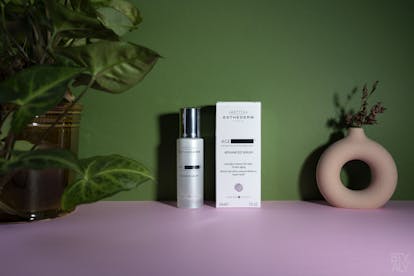




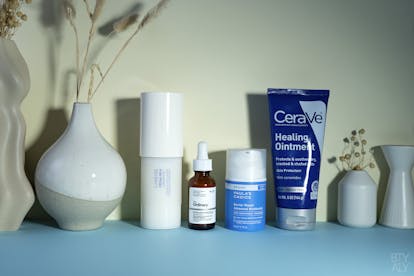















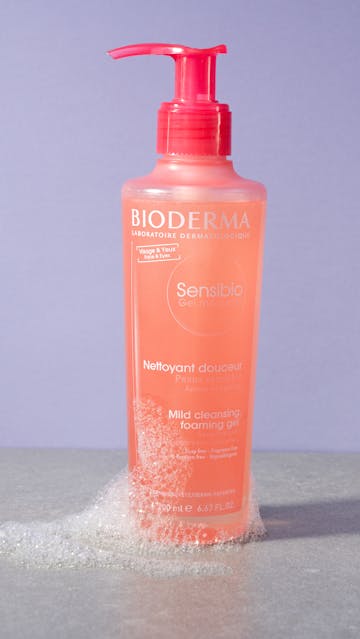





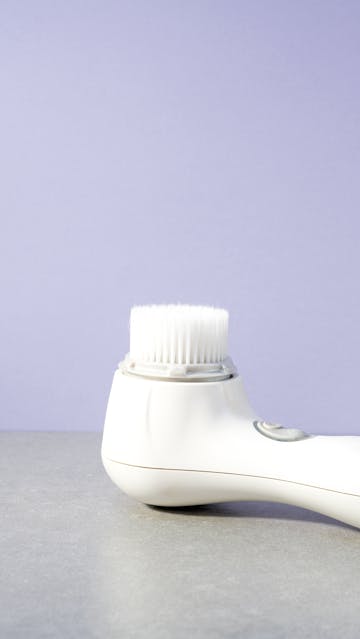

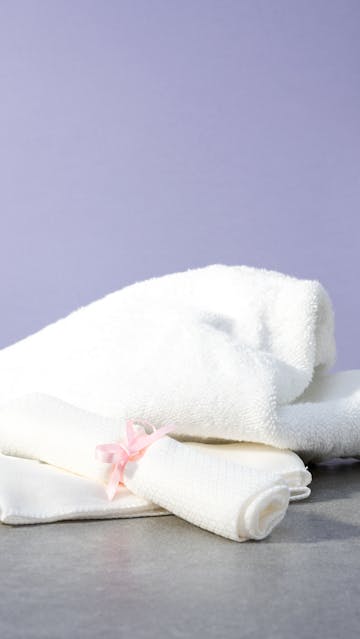





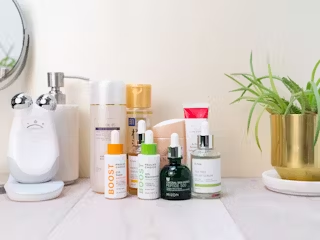




















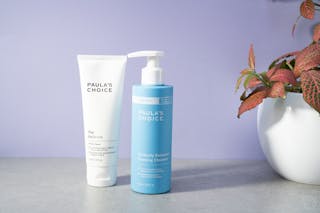










Hi Bonnie, I am absolutely in love with your blog. Since I have discovered it I can´t stop reading it everyday.
I have a question for you related to make up remover and cleansers. What is your opinion on La Roche Posay Foaming cleanser? They ave two versions: Toleriane Purifying Foaming Facial Wash and Micellar Foaming Water Face Cleanser.
Would you consider these products a 2 in 1? I am a little confused about it.
Thank you so much!
Hi Carla and thank you very much, I really appreciate the support and your kind words! 🙂
To be honest, I haven’t tried these two products, so I’m not sure… Just looking at the info on their website, it looks like the Purifying Foaming Facial Wash is a second step facial cleanser, and the Micellar Foaming Water Face Cleanser looks also like a second step facial cleanser. But in the product info, they say these two products can remove the makeup too, so yeah, it’s a bit confusing!
Also, I guess it’s also a matter of personal preference! I feel personally more comfortable using a “greasy” makeup remover at first to be sure that my sunscreen and my makeup are perfectly removed. But I know some people are using their facial cleanser twice and they’re happy about it! I guess it really depends 😉
Hi Bonnie,
I’m having great results from the BR P50 lotion and a retinol cream (Differin) I’ve been using every other day for nearly 60 days. My skin is clearer and brighter. Most days, since I’m quarantining, I only apply skincare and sunscreen, so I didn’t notice until I recently applied a BB cream that I actually have some flaky skin on the cheeks and around my mouth.
It was applying makeup that clued me in to this, but apart from the skin showing its flaky texture when makeup is applied to it, there are no other bad symptoms (my skin doesn’t feel dry, isn’t red or irritated, and I’ve experienced no breakouts). Can you recommend a gentle method for removing flaky skin? And would you say having flaky skin is a normal part of regular exfoliation (the acids and retinol)?
Thank you!
Hi Linda!
Oh trust me I know how it feels ah ah In my case, I call it “Tret Face”. And yes, it’s normal with a retinoic acid (in your case Differin) and the good news is that it’s usually temporary 🙂
To be honest, I haven’t find a perfect solution to deal with flaky skin. I try to be as gentle as I can with my skin when it happens and I just increase the hydration in my routine with richer night cream or the addition of a sleeping mask at the end of my evening skincare routine. It definitely helps!
I also try to slow down with super matte makeup products when my skin is flaky (I try to use a more glowy foundation and/or I just skip using my loose powder).
It usually helps, even if it’s not perfect.
But as I say, in my experience, flaky skin doesn’t last. After a few weeks, my skin gets use to my treatment, and it stops looking flaky 😉 (on my skin, it happened every time I increase my tretinoine concentration, and it usually lasted 1 or 2 weeks)
Hi Bonnie, do you tried any products that can be a dupe for Paula’s Choice Resist Perfectly Balanced Cleanser? I love that so much! But it is so pricey at my place so I am thinking of getting La Roche Posay Toleriane Hydrating Gentle Cleanser or Cerave Hydrating Cleanser or Cerave Cream-to-Foam Cleanser. I definitely love the silky cream of Paula’s one but have no choice to seek for a better alternative. (or maybe what else would you suggest me?) Thank you so muchhh
I personnally adore the Cerave cream-to-foam cleanser! It’s soft but it still does the job and I adore the texture. It’s also very affordable! It has been a staple in my routine for the last couple of years 😊